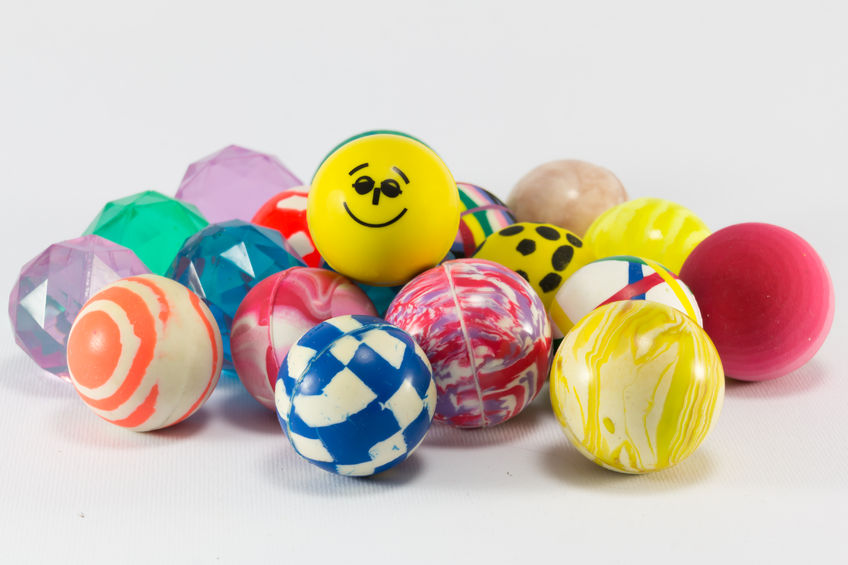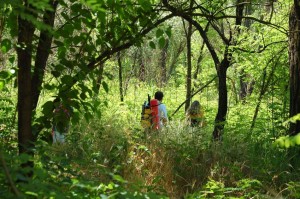Resilience: In a bouncy ball
Alan D. Thompson, ACC
Gifted Coach
This article was accepted to be presented at the 2016 SENG (Supporting Emotional Needs of the Gifted) Conference: GIFTED: Our Past and Our Future (Colonial Williamsburg, Virginia, USA).
View original article (PDF)
As soon as he is hurt, the child begins to dream of a better future: ‘I’ll get over it in time… I’ll get my own back one day… I’ll show them.’ And because the pleasure of the dream becomes linked with the painful reality, he is able to withstand it. It is even possible that the torment heightens the need to imagine a future: ‘Muddy paths often make the spiritual dawn more desirable and the need for an ideal more persistent.’
Professor Boris Cyrulnik
My long-time editor asked me a while ago about the enthusiastic and optimistic tone that echoes through all of my publications. To her, it seemed like I had never had any real problems in my life.
Of course, that couldn’t be further from the truth. Every human being has to overcome hardship in life, usually in the form of devastating events or difficult personal circumstances. And of course, I have encountered a number of huge challenges as well—many of them overwhelming. Every individual on this planet will recognise at least one of these struggles: physical abuse, suicides of a brother and later a close friend, miscarriages, infidelity, near-death experiences, dismissal, financial issues, and repeated major surgery. All before the age of 30!
Here’s the thing: everyone has stories like these. And I could choose to spend time on them if I wanted to, with predictable results if I sit on them for too long. Indeed, some of those experiences needed a lot of space, and some needed professional assistance before bouncing back.
All of them highlight the power and necessity of developing a resilient and optimistic attitude—being able to bounce back. In a 2015 survey by Australian Mensa, parents were asked about the top challenges facing their gifted children. In the survey report, ‘positivity and resilience’ was named as a challenge across nearly a quarter of the Australian population of Mensan gifted children.
And just what is resilience? The term was introduced to psychology in the 1980s by French neuropsychiatrist Boris Cyrulnik. It is the capacity to bounce back in circumstances that could otherwise to lead to breakdown. (The original concept comes from physics, where it refers to a material’s ability to return to its original form after being subjected to shock.) In plain speak, resilience refers to the idea of springing back—just like a rubber band after stretching, a tennis ball after being hit, or a bouncy ball propelling itself back into the air. This article’s original title was “Resilience: In a nutshell”. However, given that a nutshell isn’t particularly resilient, “Resilience: In a bouncy ball” seems much more appropriate!
Professor Cyrulnik explains that resilience is not a trait or quality. Instead, it is an ongoing strategy. He speaks of a “travail de résilience”. This “travail” involves a child being able to distance themselves from a traumatic experience, especially through being able to view it from a “third-party” or outside perspective.
In a 2015 presentation, Norwegian psychologist Liv M. Lassen at the University of Oslo proposed a simple formula for resilience. Separately, Professor of Child Development Ann S. Masten at the University of Minnesota provides a range of factors necessary for optimal resilience. I’ve integrated Ann’s findings to develop Liv’s formula further:
Resilience =
Smarts + Security + Persistence + Confidence + Excitement
Here is a look at each of these factors, along with simple practical tools that can be applied especially for bright children.
Smarts (as IQ and problem solving skills). Bright children are at an obvious advantage with the first factor of resilience: smarts! Being able to problem solve is a key ingredient in figuring out how to recover from a setback. But it’s only one of a variety of factors necessary for bouncing back. After all, we can’t always “logic” our way out of many kinds of trauma, including grief or injury.
Security (in relationships)
… with parents or caregivers. The importance of receiving unconditional support as a child cannot be understated. Because it is impossible to build a solid structure on a rotting or shifting foundation. A child who has not been raised with unconditional love and acceptance has the hallmarks of just that foundation. Last-minute renovations to repair furnishings, wallpaper, or adding new “smart home” electronics will never make up for a solid base.
All humans—but especially children—need 100% support and acceptance through unconditional love. This includes the use of basic tools like listening, talking, looking (eye contact, depending on the culture), and giving time (not being “too busy”).
When bright children are given this solid foundation of support and acceptance, they are well-placed to practice resilience when life gets tough.
… with others (including peers, friends, and partners). Getting parenting right is crucial. How children learn to treat others, and how they learn to allow themselves to be treated defines how they enter into relationships with others. This includes other adults, professionals, peers, friends, and eventually their own partners.
When bright children understand that they can rely on themselves and others—especially through experiencing this support system—they are better equipped to move through difficult times. Putting a strong focus on real friendships with real people (rather than electronics) is a great first step.
… with their environment and community. These close relationships extend to communities. As the old African saying goes, “It takes a village to raise a child”. This is true when we extend parenting and outside relationships right through to schools and communities. To create effective coping and learning strategies, bright children need their own personalised ideal environment—and this is especially true in the choice of neighbourhood and school. This environment includes the people in it, the quality and pace of living and learning, the support structure, and even the visual appeal of what’s around them.
Persistence (as motivation to succeed, hope and meaning). Persistence is a key part of resilience. It is defined as the quality of sticking to a task despite failures. Professor Martin Seligman found that the quality of persistence (and self-control in sticking to a task) matters twice as much as IQ. This can be promoted in bright children through providing a real challenge, focusing on what is going right, visualising the future with them, and creating goals with ongoing feedback and discussion.
Confidence (as self-control and self-efficacy). In my 2015 article on confidence, I underlined the compelling nature of this trait: “The quality of confidence is highly visible; you know a confident child when you see one. They are articulate, with a dynamic and bold use of language. They have unwavering eye contact (depending on the culture). They are also comfortable with trying new things, not knowing the answer and, yes, failure. Importantly, confident children also know when and how to remove themselves from harmful situations (including bullying).”
Genuine, deep confidence can be stimulated through the previous resilience factor of task stickability (persistence). Other tools include helping a child discover their own strengths, giving them genuine acknowledgment instead of praise, showing them tangible evidence of success in themselves and others, and allowing a bright child to follow their own excitement and passion…
Excitement (as passion and joy). The only reason that I haven’t written “excitement” as the number one factor in resilience is that that spot’s already taken by the foundation of unconditional support and acceptance. However, for ongoing resilience, bright children require the recognition and realisation of their very own passion. Without an exciting passion, bright children have nothing to aim for—their bouncy ball becomes useless.
You may have had the experience of being in the middle of a “peak” period of life (an exciting passion) when an adverse event occurs (maybe a car fault or financial hiccup). Interestingly, in this state, we can often bounce back very quickly—perhaps not even registering the adverse event at all!
As soon as a bright child shows an interest in a particular hobby or skill, parents should provide them with support and resources to explore that to its fullest. This may mean providing them with a learning course, exposure to hands-on examples, or a mentor to guide them.
Being the ball
Author of Flow and popular speaker Professor Mihaly Csikszentmihalyi (pronounced mee-high cheeks-sent-me-high) talks about the many benefits that come from adopting a strategy of resilience. “Of all the virtues we can learn, no trait is more useful, more essential for survival, and more likely to improve the quality of life than the ability to transform adversity into an enjoyable challenge.”
While it’s true that the world is getting better and better, bright children aren’t encased in glass. Their experiences will include things failing and going wrong. Being able to bounce back from these things requires careful support and the reinforcement of each resilience factor. Not just the child’s innate smarts, but also secure relationships from parents and friends, effective strategies, persistence, confidence, and a personal passion that brings them real joy.
References, Further Reading, and How to Cite
Further resources
Csikszentmihalyi, M. (2008). Flow: The Psychology of Happiness. New York: HarperCollins.
Cyrulnik, B. (2009). Resilience: How Your Inner Strength Can Set You Free from the Past. New York: Penguin.
Cyrulnik, B. (2005). The Whispering of Ghosts: Trauma and Resilience.
Duckworth, A. & Seligman, M. E. P. (2005). Self-Discipline Outdoes IQ in Predicting Academic Performance of Adolescents.
Lassen, L. M. (2015). The Importance of Good Positive Relationships for Creating Flow.
Presented at the IPPA Fourth World Congress on Positive Psychology, in Orlando, Florida, June 25-28, 2015.
Masten, A. (2015). Ordinary Magic: Resilience in Development. Guildford Press.
Moore, C. (2014). The Resilience Breakthrough: 27 Tools for Turning Adversity into Action. Texas: Greenleaf.
Seligman, M. E. P. (2012, February) Positive Psychology & Positive Education speech at St Peter’s College, Adelaide, South Australia.
Thompson, A. D. (2015). Confidence: More compelling than smarts. https://lifearchitect.ai/articles/confidence/
Thompson, A. D. (2015). Practice, practice, practice: Promoting passionate persistence. https://lifearchitect.ai/articles/persistence-paper
Thompson, A. D. & King, K. (2015). 2015 Gifted Children’s Survey Summary Report. Australian Mensa.
To cite this article: Thompson, A. D. (2016). Resilience: in a bouncy ball. Retrieved from: LifeArchitect.com.au/resilience






